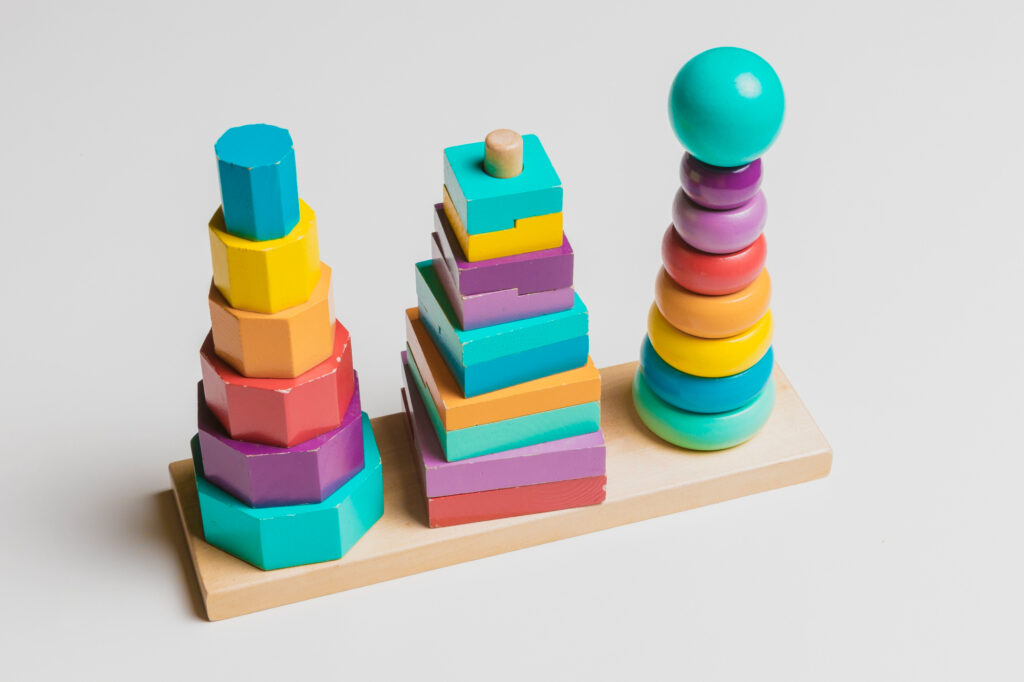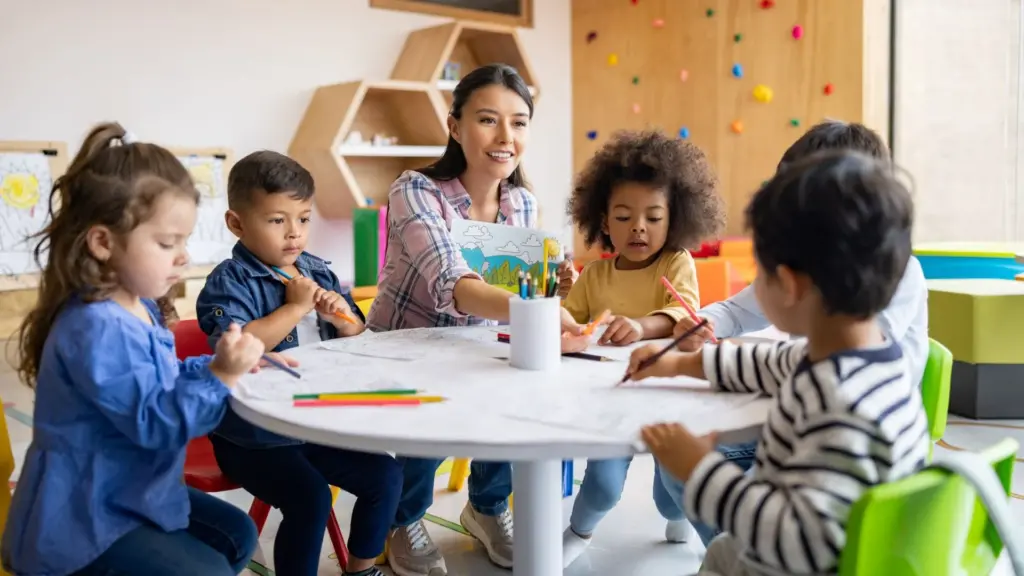
In the vibrant world of Montessori toys and education, where every tool is carefully chosen to foster a child’s natural development, stacker toys and activity cubes stand out as seemingly simple yet profoundly impactful learning aids. These unassuming objects, often overshadowed by more elaborate equipment like the Montessori climbing arch or climbing triangle, play a crucial role in developing a child’s cognitive and motor skills. This article delves into the power of these classic Montessori materials and how they contribute to a child’s holistic growth.
Benefits of Montessori Stacker Toys
Following are the benefits of montessori stacker toys:
The Humble Stacker Toy: More Than Meets the Eye
At first glance, a stacker toy might appear to be nothing more than a set of colorful rings or blocks meant to be placed on a central pole. However, in the Montessori philosophy, this straightforward toy is a gateway to a world of learning opportunities.
Developing Fine Motor Skills
One of the primary benefits of rainbow stacker toys is their ability to enhance fine motor skills. As children grasp, manipulate, and place each piece, they’re refining their pincer grip – the same grip they’ll later use for writing, buttoning clothes, and countless other daily tasks. This seemingly simple act of stacking is actually a complex interplay of muscles and hand-eye coordination.

Early Math Concepts
Stacker toys also serve as an early introduction to mathematical concepts. As children arrange the pieces, they’re unconsciously exploring ideas of size, sequence, and even basic geometry. They learn to differentiate between larger and smaller pieces, understand the concept of “order” as they stack from biggest to smallest (or vice versa), and begin to grasp spatial relationships.
Color Recognition and Language Development
Many stacker toys come in a variety of colors, providing an excellent opportunity for color recognition and vocabulary building. Parents and educators can use these toys to introduce color names, comparative terms (bigger, smaller, taller, shorter), and positional language (on top, underneath, next to).
Activity Cubes: A World of Exploration in One Toy
Activity cubes, another Montessori staple, take the concept of engaged learning to the next level. These multi-faceted toys offer a range of activities all in one compact package, making them ideal for sustaining a child’s interest and providing varied learning experiences.
Promoting Problem-Solving Skills
Each side of an activity cube presents a different challenge, whether it’s a maze, a shape sorter, or a set of gears. As children interact with these various elements, they’re developing crucial problem-solving skills. They learn to approach challenges from different angles, persist in the face of difficulty, and experience the satisfaction of finding a solution.
Enhancing Concentration and Focus
The diverse activities on an activity cube naturally encourage longer periods of engagement. This extended focus is invaluable in developing a child’s ability to concentrate – a skill that will serve them well throughout their academic journey and beyond.
Stimulating Sensory Exploration
Many activity cubes incorporate various textures, sounds, and visual elements, providing a rich sensory experience. This multi-sensory approach to learning is a cornerstone of Montessori education, recognizing that children learn best when they can engage multiple senses in their exploration of the world.
The Montessori Approach: Learning Through Play
The effectiveness of stacker toys and activity cubes in Montessori education is rooted in the philosophy’s core principle: children learn best through hands-on, self-directed activity. These toys embody this principle perfectly, allowing children to explore and discover at their own pace.
Self-Correction and Independence
One of the beauties of these toys is their self-correcting nature. A child quickly learns if they’ve placed a stacker ring in the wrong order or if a shape doesn’t fit into the corresponding hole on an activity cube. This immediate feedback allows for independent learning, boosting confidence and encouraging perseverance.
Preparation for More Complex Learning
While stacker toys and activity cubes might seem basic compared to more advanced Montessori equipment like the climbing arch or climbing triangle, they play a crucial role in preparing children for more complex learning experiences. The skills developed through these toys – fine motor control, problem-solving, concentration – form the foundation for future academic and physical challenges.
Integrating Stacker Toys and Activity Cubes with Other Montessori Materials
In a well-designed Montessori environment, stacker toys and activity cubes don’t exist in isolation. They’re part of a carefully curated set of materials that work together to support a child’s development.
From Stacker Toys to the Pink Tower
The skills developed with stacker toys pave the way for work with more advanced Montessori materials like the Pink Tower. This iconic Montessori material, consisting of ten pink cubes of varying sizes, builds upon the concepts of size differentiation and stacking introduced by simpler stacker toys.
Activity Cubes and Practical Life Skills
The problem-solving and fine motor skills honed with activity cubes directly support a child’s engagement with Montessori Practical Life activities. These might include pouring exercises, buttoning frames, or using tools – all of which require the dexterity and cognitive skills developed through earlier play with activity cubes.
Modern Additions: Silicone Ring Toys
While traditional wooden stacker toys remain popular, modern Montessori classrooms often include silicone ring toys as well. These soft, pliable rings offer a different tactile experience and are especially suitable for younger children or those still mouthing objects. The principles remain the same – stacking, ordering, and exploring – but with an added sensory dimension.
Conclusion: Small Toys, Big Impact
In the grand scheme of Montessori education, with its array of sophisticated materials and equipment, stacker toys and activity cubes might seem insignificant. However, their impact on a child’s development is profound. From fine motor skills to cognitive development, these simple toys lay the groundwork for a lifetime of learning.
As parents and educators, it’s crucial to recognize the value in these fundamental tools. While a climbing triangle might offer more obvious physical challenges, and a complex activity cube might seem more engaging, the humble stacker toy still holds its place as a cornerstone of early childhood development.
In the end, the magic of Montessori lies not in any single piece of equipment, but in the holistic approach to child development. Stacker toys, activity cubes, climbing arches, and every other carefully chosen material work in concert to support the natural unfolding of a child’s abilities. By providing these tools and the freedom to explore them, we give children the best possible start on their educational journey.

